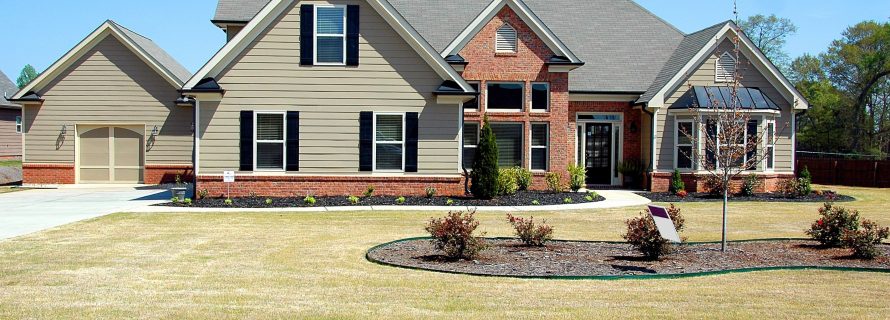How to use Landscaping to Increase Your Home’s Energy Efficiency

Money doesn’t grow on trees, but well-placed trees can increase your home’s energy efficiency – and save on utility bills. Shading the sunniest areas of your home also eases the wear and tear on your HVAC system.
Why Landscape?
Energy costs for New York are higher than the national average. The right landscaping can significantly lower those bills. We’re not talking about just placing a few trees and bushes here and there. In the cool and temperate areas of New York and New Jersey, landscape design can serve several purposes:
- Creates windbreaks to shield the home from cold winter winds.
- Absorbs the sun’s warmth in winter.
- Allows the winter sun to soak through south-facing windows.
- Provides shade during summer while directing cool breezes to the house.
- Shades against the direct summer sun for west and south windows.
Landscaping and Home Environment
Landscaping for energy efficiency depends on the microclimate of your home. How much shade, sun, snow, humidity, rain, and wind does your property get? For example, houses on sunny southern slopes often have a warm microclimate. Nearby streams, lakes, ponds, or rivers may decrease air temperature or increase the home’s humidity. Knowing the microclimate of your house helps you choose the right native trees and plants for your landscape.
Make a list of HVAC problems inside your house and how much effort it takes the furnace and central air conditioning system to modify inside temperatures.
Professional or DIY?
Professional landscapers are preferable when it comes to designing your property for energy efficiency. However, landscape design costs vary. You also have to factor in the cost of trees, shrubbery, structures, and labor. Make a list of what you want and budget before deciding whether to hire out or do it yourself.
Planting Tips for DIYers
Before digging holes into the ground, determine the normal wind pattern toward your house, and how strongly the sun shines through windows. Shading for windows, glass doors, and the roof deflects sunlight.
Mixing trees and shrubs protects the property from storm and wind damage. Woody nesting material and flowering food sources make birds and wildlife happy. Layer evergreens and deciduous trees in two or three rows to shelter from cold winds and hot breezes. Don’t worry about planting everything in a straight line – it rarely works.
Place a row of low-growing trees or shrubs closer to the house. Flowering plants like wood anemone, great blue lobelia, and eastern teaberry bring birds and butterflies to the yard.
Next is a row of leafier deciduous trees. Dogwoods, Japanese maples, silver bells, and hollies are good choices for well-draining soil.
Red oaks and sugar maples are native deciduous trees in New York that filter heavy sun in summer and work with conifers to shield the yard in winter. Planting trees in groups allows for thick shade during hot summer months.
In the last row, layer your property with pine trees; Eastern, white, candlewood, red, and shortleaf.
For summer shade, plant perennial or annual vines on trellises to place near windows. Native vines to consider? Virginia creeper, wisteria, American bittersweet, and trumpet creeper. Morning glories are pretty, too.
Preservation
Well-designed landscaping can also cut down on the amount of water you use. Cool-season grasses do well in New York. They have strong root systems that hold soil in place and absorb nutrients without much stress on the environment. Kentucky bluegrass and fescues do well under tall trees with large canopies – if the turf is getting enough sun.
Hardscaping and Fencing
High wooden privacy fences and pergolas with wooden roofs provide barriers against cold winds. In summer, outdoor window shade awnings keep hot sun at bay and the house cooler so the air conditioner won’t have to work so hard.
The Flip Side
Sealing up the house and yard does cut down on wasted electricity. But cutting off circulation is a different matter. Houses must “breathe.” Sunshine and wind dry off rain-soaked land and buildings (important for defense against mold and mildew). Too much shade means indoor lights and the AC are always on, burning up energy and raising your utility bill.
The right landscaping design can save you thousands of dollars and pay for itself in just a few years. Not only will you lower your heating and cooling costs, but you’ll also have a shaded yard to enjoy for years to come.
About The Author: Barb Ambrose is a home stager and landscape design writer. She is a social butterfly and loves to entertain guests in her outdoor kitchen and entertainment center.
Photo by Pixabay from Pexels
- Additions and New Construction
- All Exteriors
- Alterations
- Basements
- Bathrooms
- Customer Service
- Customer Stories
- Decks
- Design & Planning Show
- DIY
- Doors
- Educational Resources
- Extreme Makeover Home Edition
- Fashion Show
- General Remodeling
- Green Living
- Handyman Home Services
- Home Decor
- Home Entertainment
- Home Improvement
- Home Improvements
- How to Tips
- In The Community
- Kitchens
- Off-the-Wall Remodeling Stories
- Remodeling
- Resources
- Roofing
- Siding
- Social Media
- Sunrooms
- Tips & Tricks
- Trends
- Windows

